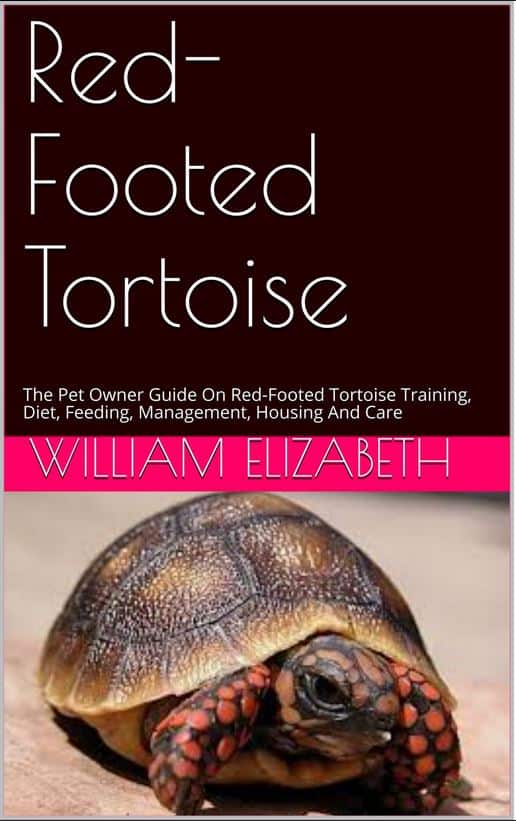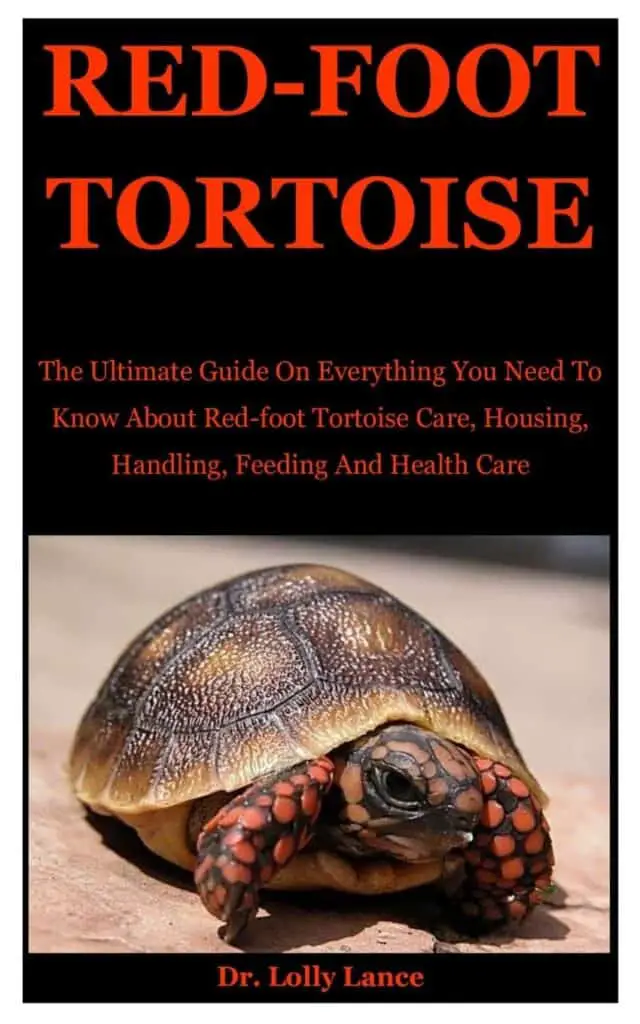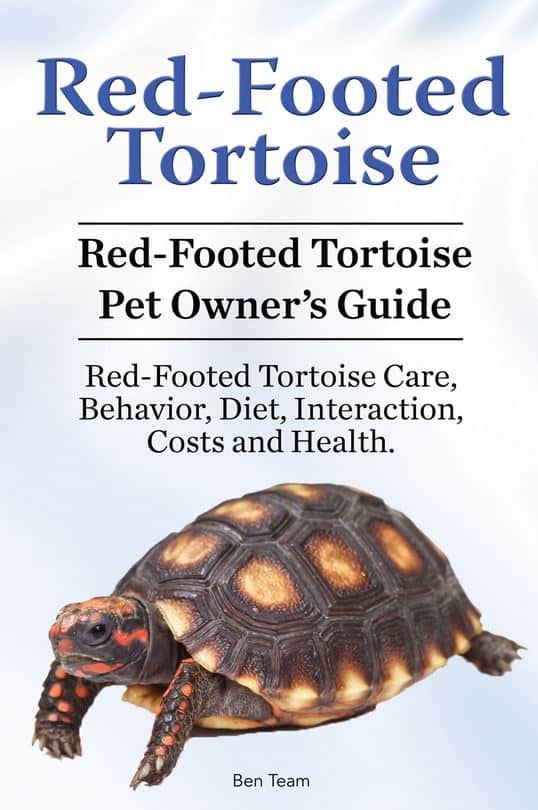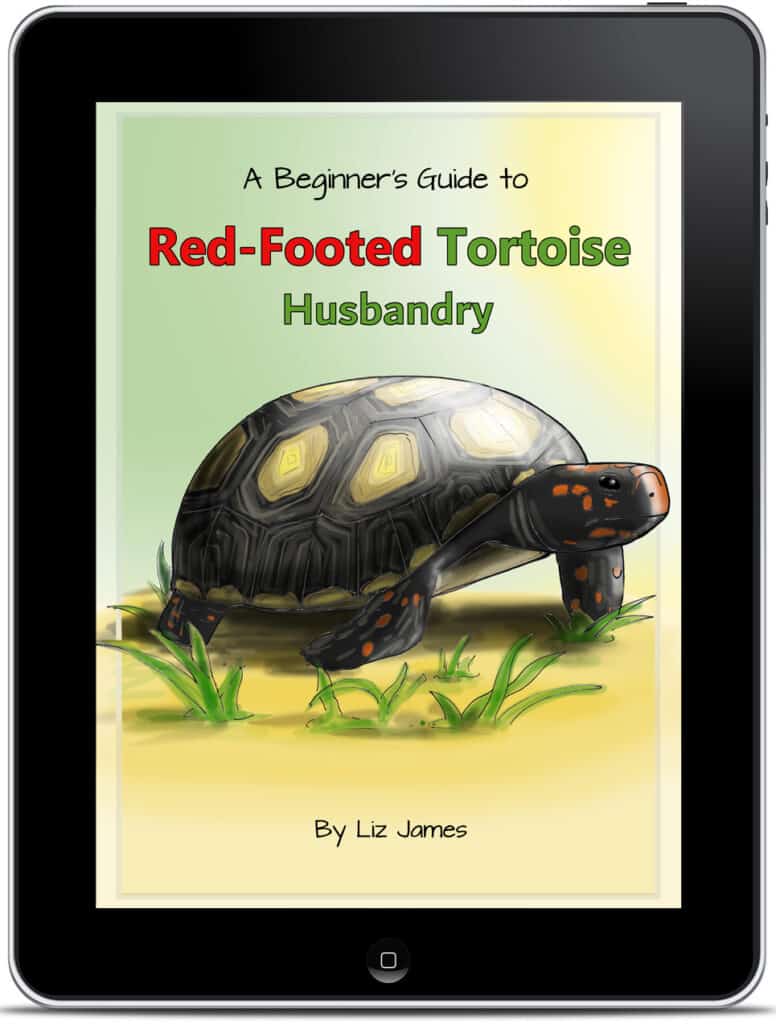As great as the internet is as a source of information on red-footed tortoises, the truth is that the level of detail you’ll find on forums, Facebook groups, Youtube, and even sites like this can never hope to stack up against what a good book can offer. Not only are books generally more detailed than other resources, they’re also a ‘one stop shop’ that you can become familier with, reading from cover to cover in the first instance, and later coming back to again and again as a reference.
As part of our ongoing quest to provide you with the best information possible, I’ve taken the time to review 3 of the most popular red-footed tortoise informational ebooks available on Amazon, as well as an offer of our own here at TortoiseExpert.com.
A Beginner’s Guide to Red-Footed Tortoise Husbandry- by Liz James
Sure we’re going to be biased here, but we believe our own contribition into the world of red-foot tortoise books is the best offering on the market.
Not only have we included much of the technical information required by anyone wishing to keep a red-foot, but also more in the way of tips, interesting facts and illustrations that help keep the reader engaged, and hopefully aid with the retention of the information presented.
>>> Click Here For Further Information <<<
‘Red-Footed Tortoise’ (The Pet Owner Guide on Red-Footed Tortoise Training, Diet, Feeding, Management, Housing And Care) by William Elizabeth

I’ll get straight to the point with this one and state that I’m not particularly impressed with this book. There’s very little content present, with only 11 pages of ‘useful’ content on display. It looks almost as though much of the intended content isn’t even included, with the page numbers seemingly jumping several pages at a time.
In terms of the content itself, some useful information is included, although it is quite bizarrely worded in places – descriptions of ‘red-footed tortoises’ on one line soon being replaced by the charming yet bemusing ‘crimson-footed tortoise’, or more bizarrely still the word ‘puppy’ being used to describe a tortoise.
If I had to guess I would suggest the content for this book has been ‘spun’ (the words of another book put through a thesaurus tool), and as such I can’t see that a lot of genuine care or attention has gone into creating it. Many of the facts and figures stated, seem reasonable if you’re able decifer them from some of the more bizarre descriptions.
For 2 or 3 dollars or pounds it certainly won’t break the bank, but you should be aware that you’re buying what can be best described as a ‘pamphlet’, and a pretty dicey one at that.
Red-Foot Tortoise (The Ultimate Guide On Everything You Ned to Know About Red-Foot Tortoise Care, Housing, Handling, Feeding And Health Care) By Dr Lolly Lance

Much like the previous entry on this list, this book seems to suffer from the same bizarre language choices and sporadic page numbering.
Again it does contain some useful information, although you will need to be a codebreaker to access it. One of my personal favourite passages states that:
They’re not excessively regional of settling or taking care of locales except if two guys are contending over a female.
Translation (I think):
Red-footed tortoises are not particularly territorial, and do not fight except in the case of two males competing over a female.
Again this falls at a similar price point to the the previous entry, although that doesn’t justify giving it any attention in my opinion.
Sadly there appears to be several more similar books to this and the previous entry on this list, and although I haven’t purchased and read them, the Amazon reviews and sample pages are enough to suggest that they fall under the same, largely useless, bracket.
Red-Footed Tortoise Pet Owner’s Guide by Ben Team

Onto a more serious contender for a useful resource on red-footed tortoises, this book contains a wealth of useful information, with detailed chapters on anatomy and husbandry.
The author Ben Team clearly knows what he is talking about, and his experience of caring for tortoises clearly shines through in his writing. It’s fair to say that reading this book will give you a good overall understanding of what is required to care for a red-footed tortoise.
At the same time however, although it’s a great resource, it isn’t perfect, and one of my biggest criticisms is that some of the information presented is very academic in nature, with some information that may not be relevent for the casual red-foot owner- detailed explanations about the science of lighting for example. This book also fails to give practical tips and advice which a novice owner in particular would find useful.



